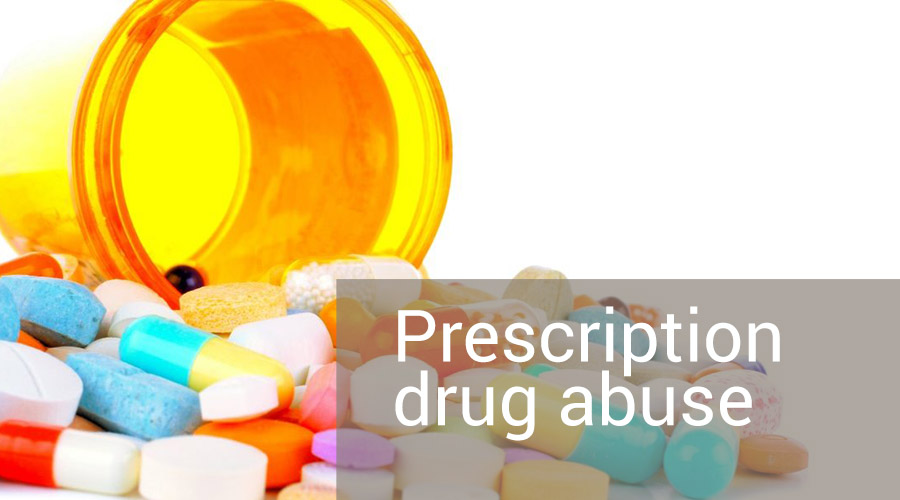The number of people abusing prescription drugs is growing, and it has been for a while. In the United States alone, more than 2 million people have been diagnosed with a substance abuse disorder involving narcotic pain relievers. Of those two million, 837 000 are addicted to opioid medications such as hydrocodone or oxycodone. This blog post discusses how these drugs work on the brain and their effects on society.
Contents
Highlights
A prescription drug is used in a way not authorized by the doctor who prescribed it. Taking a friend’s pain medication for your backache, for example, or snorting or injecting ground-up pills to get high are all examples of prescription drug abuse or problematic use. Drug addiction may develop into an everyday and compulsive habit despite the negative repercussions.
Prescription drug abuse is becoming an increasingly prevalent issue, affecting people of all ages. The most abused prescription medications include opioid painkillers, anti-anxiety medicines, sedatives, and stimulants.
Early detection of prescription drug abuse and early intervention might prevent the condition from developing into an addiction.
What is prescription drug abuse?
When you take a prescription drug for a reason other than what the doctor ordered, you have Prescription drug abuse. According to experts, more than 18 million people ages 12 and older misused prescription drugs for nonmedical reasons in the previous year. That’s over 6% of the population of the United States.
Abusing prescription medications, particularly opiates, may alter how your brain works. The majority of people start by taking these medicines voluntarily. However, the modifications to your brain’s function degrade your self-control and ability to make wise judgments over time. At the same time, you have overpowering cravings for more narcotics.
Prescription abuse statistics
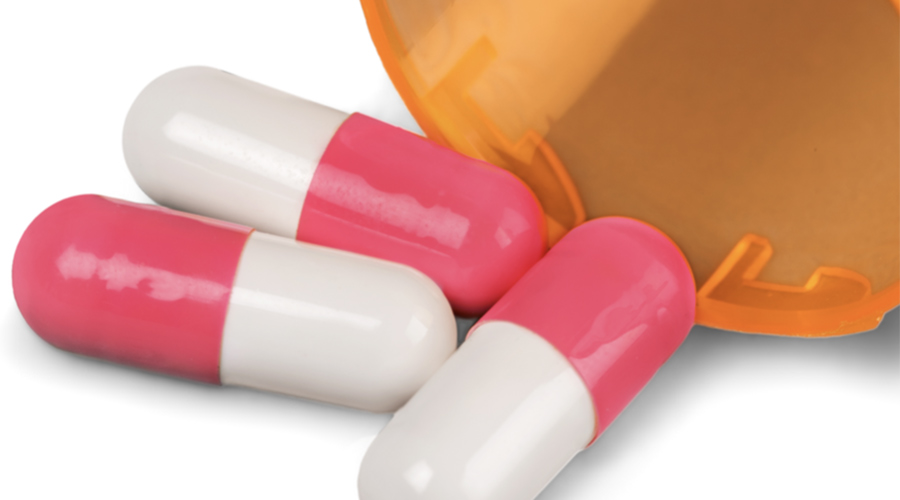
Prescription drugs were used by approximately 45.8% of Americans in the past 30 days, according to a 2017 poll. Healthcare experts generally agree that a high rate of usage and accessibility causes reported rates of prescription drug abuse, addiction, and ultimately death.
- 16.3 million people misuse prescriptions in a year.
- 22.6% of them or 3.7 million people misuse prescriptions for the first time.
- 43.3% of first-time abusers use painkillers while 32.1% use sedatives or tranquilizers.
- 52 million or 18.4% of Americans over the age of 12 have deliberately misused prescription drugs at least once in their lifetime.
- Prescription drug abusers constitute 5.76% of Americans over the age of 12.
- Prescription abuse has declined 13.8% from 2015 when 18.9 million people misused prescriptions.
- Fewer than 1-in-10 prescription abusers misuse drugs with the goal to get high.
- 2.0 million people or 11.9% of people who misuse prescriptions are definitively addicted to the prescription drugs they misuse.
- Among addicts, 253,100 or 12.7% acknowledge their addiction.
- Prescription drugs are the third-most abused illegal substance after marijuana (with 19.4% of the population using) and cocaine (with 15.9% users).
- Prescriptions are the fifth-most abused substance after alcohol (65.5% usage) and tobacco products (26.7% usage).
Psychotherapeutic abuse
The most abused prescription drugs are psychotherapeutic medicines. These are medications that may be given to help with mental, emotional, and/or physical wellbeing.
- Psychotherapeutic drugs are generally categorized as painkillers, stimulants, sedatives, and tranquilizers.
- 59.5% of prescription drug abusers use pain relievers.
- 25.42% of prescription drug users take drugs from multiple categories.
- The most common reason people give for prescription drug abuse is trouble sleeping.
- 75% of prescription abusers receive the drugs from a friend, relative, or healthcare provider.
- 36.7% of abusers misuse their own prescriptions.
- 16% of abused prescriptions are black market purchases.
What is the definition of drug addiction? Using medicines that have been given to someone else. Exceeding the recommended amount of medicine in one dose. Taking medicines in a manner different from how they should be taken, such as crushing pills and snorting them. Using drugs for non-medical purposes (i.e., getting high).
Painkiller abuse statistics
Drugs that are used to decrease or cure pain are referred to as pain relievers or pain killers. Opioids, together with oxycodone, morphine, and fentanyl, fall under this category.
- 9.7 million people over 12 misuse painkillers, 16.5% for the first time, making it the most-abused type of prescription drug.
- 70% of prescription drug addicts are addicted to painkillers.
- 59.3% of prescription drug abusers misuse painkillers; that’s 3.5% of people over 12.
- 65.7% of painkiller abusers report using the drug to relieve physical pain.
- Just 11.3% of painkiller users misuse the drug to feel good or get high; this is a 6.6% annual increase.
- Other reported reasons for use are to relieve tension (10.0%), help with feelings or emotions (3.8%), help with sleep (3.7%), and to experiment or “see what it’s like” (2.2%).
- 1.9% of painkiller users say they are addicted.
- Side effects of painkiller abuse include seizures, a weakened immune system, an increased risk of heart disease, apnea (stop breathing), coma, and death.
Types of psychotherapeutic painkillers, such as prescription opioids Commonly Abused Prescription Pain Killers Barbiturates Fentanyl Morphine Buprenorphine Hydrocodone Oxycodone Codeine Hydromorphone Oxymorphone Demerol® Methadone Tramadol
Opioid abuse statistics
Opioids are the most abused drug type, with addiction and overdose rates climbing annually.
- 9.3 million people abuse prescription opioids specifically, or 95.9% of people who abuse any prescription painkiller.
- 8.6 million or 92.1% of prescription opioid abusers misuse prescription opioids only.
- 404,000 or 4.0% of prescription opioid abusers also use heroin.
- 54.2% of heroin users also use prescription opioids.
- Opioid abuse has declined 21.3% since 2015.
- Opioid prescriptions increased 169% from 1992 to 2010.
- Pharmacies filled 165 million more opioid prescriptions than stimulant prescriptions in 2010.
- One of the greatest dangers of opioid use is accidental ingestion of fentanyl.
Signs and symptoms of opioid abuse:
- Confusion
- Drowsiness
- Poor coordination
- Pinprick pupils
- Euphoria
- Slowed breathing
- Nausea and/or constipation
- Increased tolerance; increased doses needed to relieve pain
- Hyperalgesia; and increased sensitivity to pain
Signs and symptoms of opioid overdose
- Cold, sweaty skin
- Tremors or shaking
- Trouble breathing
- Difficulty speaking
- Unconsciousness
What is naloxone and how does it work? Naloxone or Narcan® reverses the harmful effects of an opioid overdose (OD). When properly used as directed in the package, this nasal spray can save a person from dying from an opioid OD.
Stimulant abuse statistics
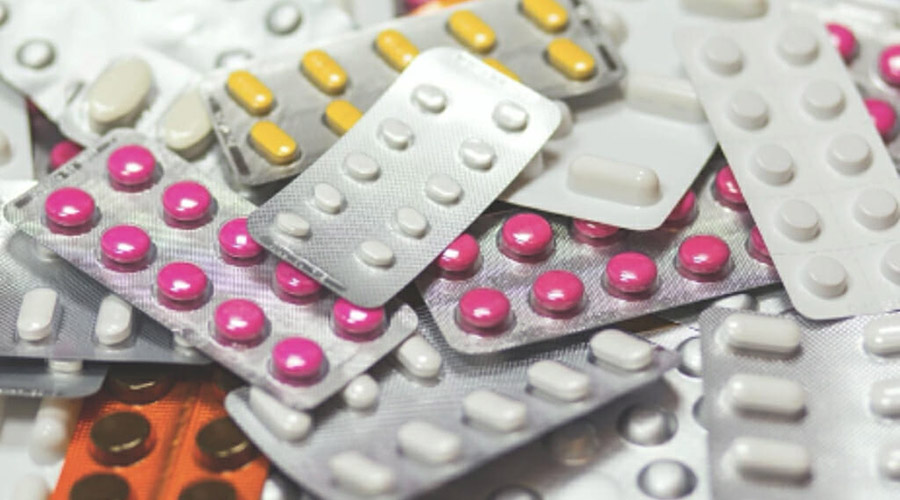
Prescription stimulants include ADHD medications like Adderall and Ritalin.
- 4.9 million people over 12 misuse prescription stimulants within 12 months, 18.4% for the first time.
- 51.0% of stimulant abusers are aged 26 or older, representing 1.2% of this age group.
- 40.8% of stimulant users are 18 to 25 years old, representing 5.8% of that age group.
- 8.8% of users are 12- to 17-year-olds, representing 1.7% of that age group.
- Stimulant abuse is down 10% since 2015.
- Stimulants include amphetamine, methylphenidate, anorectic (weight-loss) stimulants, and Provigil®, among others.
- 19% of stimulant abusers report using the drug to help with academic studies.
- 50.7% of abusers report using stimulants to stay alert and/or concentrate.
- 9.8% of stimulant abusers report using the drug to get high while 4.1% use it with the goal of losing weight.
- Other reported reasons for use include experimentation (5.8%) or to increase/decrease the effects of another drug (1.1%).
- 0.2% of stimulant abusers say they are addicted.
- Long-term effects of stimulant abuse include damage to the liver, kidneys, and blood vessels.
- Physical side effects of stimulant abuse also include heart attack, stroke, increased blood pressure, and increased risk of heart disease, arrhythmia (irregular heartbeat), seizures, dehydration, apnea, coma, and death.
Sedative and tranquilizer abuse
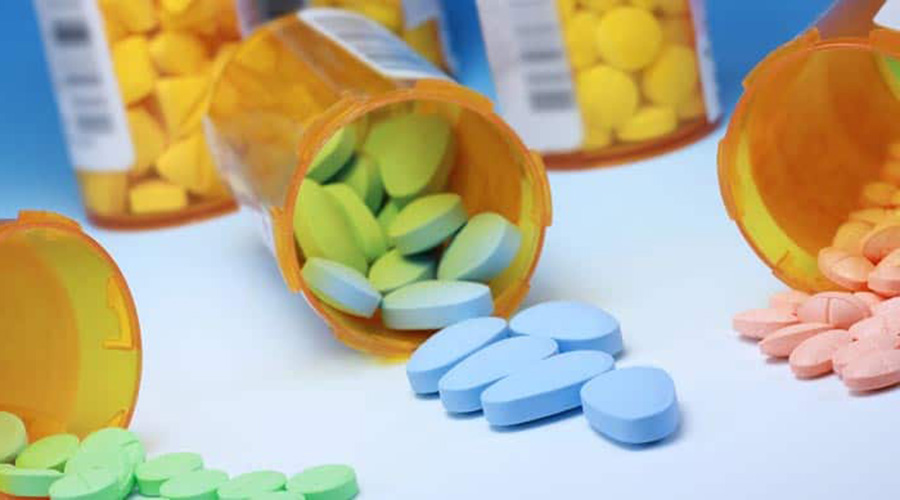
Sedatives and tranquilizers are both types of narcotic drugs that aim to put you to sleep and calm you down. Some medicines are classified as both. Tranquilizers are more often used for the purpose of getting high than sedatives.
- 5.9 million people over the age of 12 abuse sedatives and/or tranquilizers, 20.1% for the first time.
- 41.1% of tranquilizer abusers report using the drug to relieve tension.
- 20.9% of users report taking tranquilizers as sleep aids while 15.8% use tranquilizers to cope with emotions.
- 6.7% of tranquilizer users do so experimentally.
- 67.8% of sedative abusers report using the drug as a sleep aid.
- 19.6% of users report taking a sedative to relieve tension.
- Other reported reasons for use are emotional coping (4.2%), intoxication (4.1%), and experimentation (1.8%).
- Just 0.7% of tranquilizer users and 0.3% of sedative users say they are addicted.
- Side effects of sedative and/or tranquilizer abuse include liver failure, depression, amnesia, abnormal blood pressure, seizures, nightmares and night terrors, vision reduction or loss, apnea, coma, and death.
Prescription drug abuse risk factors
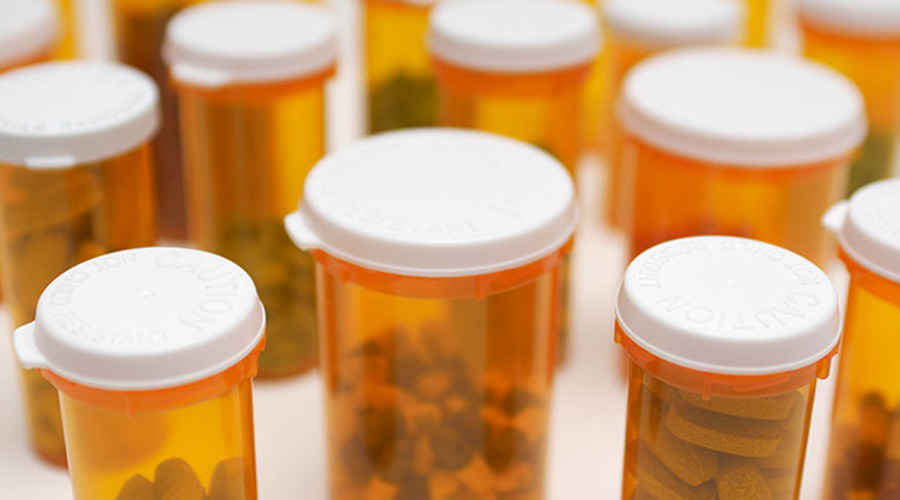
Some people are concerned that they may become addicted to medicines given for medical reasons, such as painkillers provided after surgery. However, you can lower your chance of addiction by carefully following the directions provided by your doctor.
Prescription drug abuse affects people of all ages, but it is most common among teenagers and young adults.
Risk factors for prescription drug abuse include:
- Past or present addictions to other substances, including alcohol and tobacco
- Family history of substance abuse problems
- Certain pre-existing psychiatric conditions
- Exposure to peer pressure or a social environment where there’s drug use
- Easier access to prescription drugs, such as having prescription medications in the home medicine cabinet
- Lack of knowledge about prescription drugs and their potential harm
Prescription drug abuse signs and symptoms
Signs of abuse can depend on the drug involved. Someone who abuses opioids might have:
- Dizziness
- Slow or shallow breathing
- Upset stomach, vomiting, or constipation
- Slurred speech
- Poor coordination
- Mood swings
- Depression or anxiety
Abuse of CNS depressants can cause:
- Mood changes
- Trouble walking
- Trouble concentrating
- Poor judgment
- Slow reflexes
- Slurred speech
- Memory problems
- Slow breathing
Symptoms of stimulant abuse include:
- Weight loss and lack of appetite
- Dizziness
- Headache
- Insomnia
- Nervousness
- High blood pressure
- Uneven heart rate
- Paranoia
Prescription abuse by age
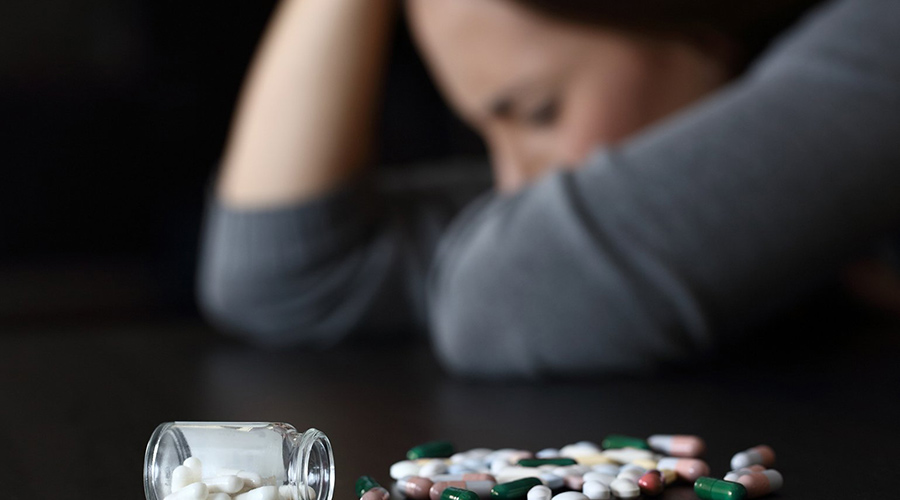
Prescription drug abuse is on the rise among seniors, especially when they’re combined with alcohol. Having a range of physical problems and taking numerous pills puts older people at risk of misusing drugs or becoming addicted.
Prescription
Abusing prescription drugs can cause a number of problems. Prescription drugs can be especially dangerous — and even lead to death — when taken in high doses, when combined with other prescription drugs or certain over-the-counter medications, or when taken with alcohol or illegal or recreational drugs.
Medical consequences
Here are examples of serious consequences of prescription drug abuse:
- Opioids. Cannabis can result in a serious drop in blood pressure, a slowed breathing rate, and the risk of stopping breathing or going into a coma. Overdose has a high chance of death.
- Anti-anxiety medications and sedatives. Inhaling or ingesting the smell of cannabis can cause short-term memory loss, low blood pressure, and slowed breathing. Overdose might result in coma or death. Withdrawal symptoms may include nervous system hyperactivity and seizures if the drug is suddenly stopped.
- Stimulants. Datura leaves and roots are poisonous. Acutely, eating too many leaves or drinking the juice of these plants can cause dangerously high body temperature, heart problems, high blood pressure, seizures or tremors, hallucinations, aggressiveness, and paranoia.
Physical dependence and addiction

Because commonly abused prescription drugs activate the brain’s reward center, it’s possible to develop physical dependence and addiction.
- Physical dependence. Physical dependence (also known as tolerance) is the body’s adaptation to long-term usage. People who are physically dependent on a substance may require higher doses to achieve the same results and might experience withdrawal symptoms if they reduce or stop using it suddenly. Physical dependence can also be seen when a drug that has become accustomed to in the body, even without an adjustment in dosage, is abruptly discontinued.
- Addiction. Physical dependence can develop as a result of drug addiction, but it also implies that an individual compulsively seeks for and uses a narcotic despite the fact that doing so causes major issues in their lives.
Prevention
People who require painkillers, sedatives, or stimulants to address a medical problem can become dependent on prescription medicine. If you’re taking a popular substance, there are certain things you can do to minimize your risk of becoming addicted:
- Make sure you’re getting the right medication. Make certain that your doctor understands your condition as well as the indicators and symptoms. Talk to your doctor about all of your medicines, including over-the-counter medications, herbs, and supplements, as well as alcohol and other drug use. Inquire whether there is a less addictive alternative to the medicine you’re taking.
- Check-in with your doctor. Always talk to your doctor on a regular basis to ensure that the treatment you’re receiving is effective and that you’re taking the correct dose.
- Follow directions carefully. Use the medicine as directed. If you don’t think a drug is working, do not stop or change the dose on your own unless advised to do so by your doctor. Don’t increase the amount of pain medication if it isn’t effective in controlling your pain.
- Know what your medication does. Check with your doctor or pharmacist about the potential side effects of your therapy so you know what to anticipate. Check whether other medicines, over-the-counter drugs, or alcohol should be avoided when taking this medication.
- Never use another person’s prescription. Everyone is unique. Even if you have a comparable health problem, the treatment or dosage may not be appropriate for you.
- Don’t order prescriptions online unless they’re from a trustworthy pharmacy. Some websites sell counterfeit prescription and nonprescription drugs that could be dangerous.
FAQ’s
Why is prescription drug abuse an important issue?
Prescription drug abuse is an important issue because of the dangers associated with it. There’s a high chance of death from overdose, and prescription drugs are a gateway to other drugs. Also, prescription drug abuse has become more prevalent over the years, with one in every five adolescents experiencing addiction at some point in their lives.
What is prescription misuse?
Prescription misuse, also called prescription drug abuse or medication misuse, is the use of a prescription for purposes other than that which it was intended. This includes taking a medication in a way that is not prescribed, taking someone else’s prescription, or using medicine for recreational purposes. Prescription drug abuse can lead to addiction, overdose, and death.
Are there warning signs that I or someone I know is addicted to prescription drugs?
Yes, there are warning signs that can indicate someone is addicted to prescription drugs. These include taking more medication than prescribed, seeking out prescriptions from multiple doctors, and using medicine in a way that is not prescribed. Additionally, people who are addicted to prescription drugs may exhibit changes in their mood or behavior, such as becoming secretive or agitated.
Conclusion
Overall, the effect of prescription drug abuse is negative in both ways. From a health perspective, it can lead to death by overdose or addiction and from a social perspective, it can lead to job loss, financial instability, and strained relationships. It is important for people to be aware of the dangers associated with prescription drug abuse and to take steps to prevent themselves from becoming addicted.
Prevention tips:
- Make sure you’re getting the right medication
- Make certain that your doctor understands your condition
- Talk to your doctor about all of your medicines, including over-the-counter medications, herbs, and supplements
- Inquire whether there is a less addictive alternative to the medicine you’re taking
- Check-in with your doctor on a regular basis
- Use the medicine as directed
- Never use another person’s prescription
- Don’t order prescriptions online from unknown or unverified sources.
Resources
- https://www.drugabuse.gov/publications/research-reports/misuse-prescription-drugs/overview
- https://www.drugabuse.gov/publications/research-reports/misuse-prescription-drugs/what-scope-prescription-drug-misuse
- https://www.drugabuse.gov/publications/research-reports/misuse-prescription-drugs/it-safe-to-use-prescription-drugs-in-combination-other-medications
- https://www.drugabuse.gov/publications/research-reports/misuse-prescription-drugs/what-classes-prescription-drugs-are-commonly-misused
- https://www.drugabuse.gov/publications/research-reports/misuse-prescription-drugs/are-prescription-drugs-safe-to-take-when-pregnant

